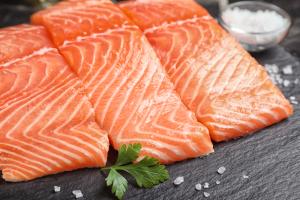
FDA Red Dye 3 Ban: A Pivotal Moment for the Salmon Industry to Rethink Artificial Astaxanthin
The move toward eliminating harmful additives is not just about meeting regulatory standards—it is about prioritizing consumer health and confidence in aquaculture products. As the industry adapts, the focus must shift toward safer, high-quality alternatives that align with the growing demand for natural ingredients.
Understanding Red Dye No. 3 and the Ban
Red Dye No. 3, or erythrosine, is a synthetic dye derived from petroleum. Historically used in a range of food products—including candies, baked goods, and cereals—it has been linked to behavioral issues in children and negative effects on memory and learning. In response to mounting scientific evidence, the FDA has mandated that manufacturers remove Red Dye No. 3 from all food products by January 15, 2027.
Artificial Astaxanthin in Salmon Feed: A Parallel Concern
Artificial astaxanthin is approved by the EFSA and FDA as a color additive and is strictly limited to the aquaculture of salmonids to enhance their color. This additive is also derived from the petrochemical industry. Due to potential differences in the biological activity of optical isomers and the potential risk of residual chemical solvents, synthetic astaxanthin is not approved by the EU EFSA or FDA USA for food or medical use.
Why the Salmon Industry Should Transition Away from Artificial Dye
Consumer preferences are evolving. More than ever, people want clean, natural ingredients in their food, and the seafood industry is no exception. Artificial astaxanthin does not meet the growing consumer demand for transparency and sustainability. The continued use of synthetic colorants in salmon feed places the entire aquaculture sector at risk of criticism—much like the backlash faced by manufacturers using Red Dye No. 3.
Fortunately, natural sources of astaxanthin are already available and widely used by a growing number of responsible, conscientious farmers. Embracing these alternatives not only ensures compliance with regulatory trends but also enhances the industry’s commitment to quality and consumer trust. By taking proactive steps now, the salmon industry can shift toward natural alternatives that align with emerging regulatory trends and consumer expectations for more transparency in food production.
Sources:
https://www.hfpappexternal.fda.gov/scripts/fdcc/index.cfm?set=ColorAdditives&id=Astaxanthin
https://www.fda.gov/food/hfp-constituent-updates/fda-revoke-authorization-use-red-no-3-food-and-ingested-drugs
Yuki Kawashima
ANCI, Inc.
+1 404-891-1300
email us here
Visit us on social media:
Facebook
LinkedIn
Instagram
Distribution channels: Agriculture, Farming & Forestry Industry, Consumer Goods, Food & Beverage Industry, Science
Legal Disclaimer:
EIN Presswire provides this news content "as is" without warranty of any kind. We do not accept any responsibility or liability for the accuracy, content, images, videos, licenses, completeness, legality, or reliability of the information contained in this article. If you have any complaints or copyright issues related to this article, kindly contact the author above.
Submit your press release
